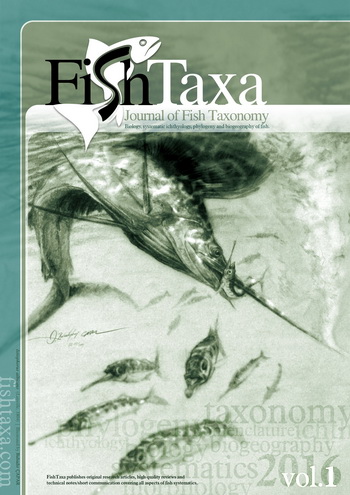Comment on “A proposal for a new generic structure of the killifish family Aphaniidae, with the description of Aphaniops teimorii (Teleostei: Cyprinodontiformes)” by Jörg Freyhof & Baran Yoğurtçuoğlu, Zootaxa (July 2020) 4810 (3): 421–451
Azad TEIMORI Department of Biology, Faculty of Sciences, Shahid-Bahonar University of Kerman, Kerman, Iran.
Hamid Reza ESMAEILI Ichthyology and Molecular Systematic Laboratory, Department of Biology, College of Sciences, Shiraz University, Shiraz, Iran
Nashat HAMIDAN Royal Society for the Conservation of Nature, Amman, Jordan
Bettina REICHENBACHER Department of Earth and Environmental Sciences, Palaeontology and Geobiology & GeoBio-Center LMU, Ludwig-Maximilians-Universität München, Munich, Germany.
Abstract
Following an exhaustive review of published molecular data and morphological characters, we propose a new generic classification for the Cyprinodontiform family Aphaniidae. The generic concept applied is based on monophyly, reasonable compactness, and morphological diagnoses. The proposed genera are monophyletic and compact groups that can be diagnosed by a combination of morphological characters. All species in Aphaniidae are morphologically homogeneous and have similar scale patterns, fin positions, and meristic characters. However, only a handful of morphological characters, including colour patterns, permit identification. We propose separation of Aphaniidae into eight monophyletic genera: Anatolichthys, Aphaniops, Aphanius, Kosswigichthys, Paraphanius, and Tellia, in addition to the new genera Esmaeilius and Apricaphanius, which are described for the species of the A. sophiae and A. iberus species groups, respectively. The original description of Aphanius hormuzensis does not fulfil the criteria of the International Commission on Zoological Nomenclature, therefore this taxon is re-described as A. teimorii. Esmaeilius arakensis, E. kavirensis, E. mesopotamicus, and E. pluristriatus are treated as synonyms of E. sophiae. Esmaeilius farsicus is a junior synonym of E. persicus (Jenkins, 1910). The fossil genus Brachylebias is considered as incertae sedis since it lacks diagnostic characters which would permit it to be assigned to any of the extant genera recognised in this study.

